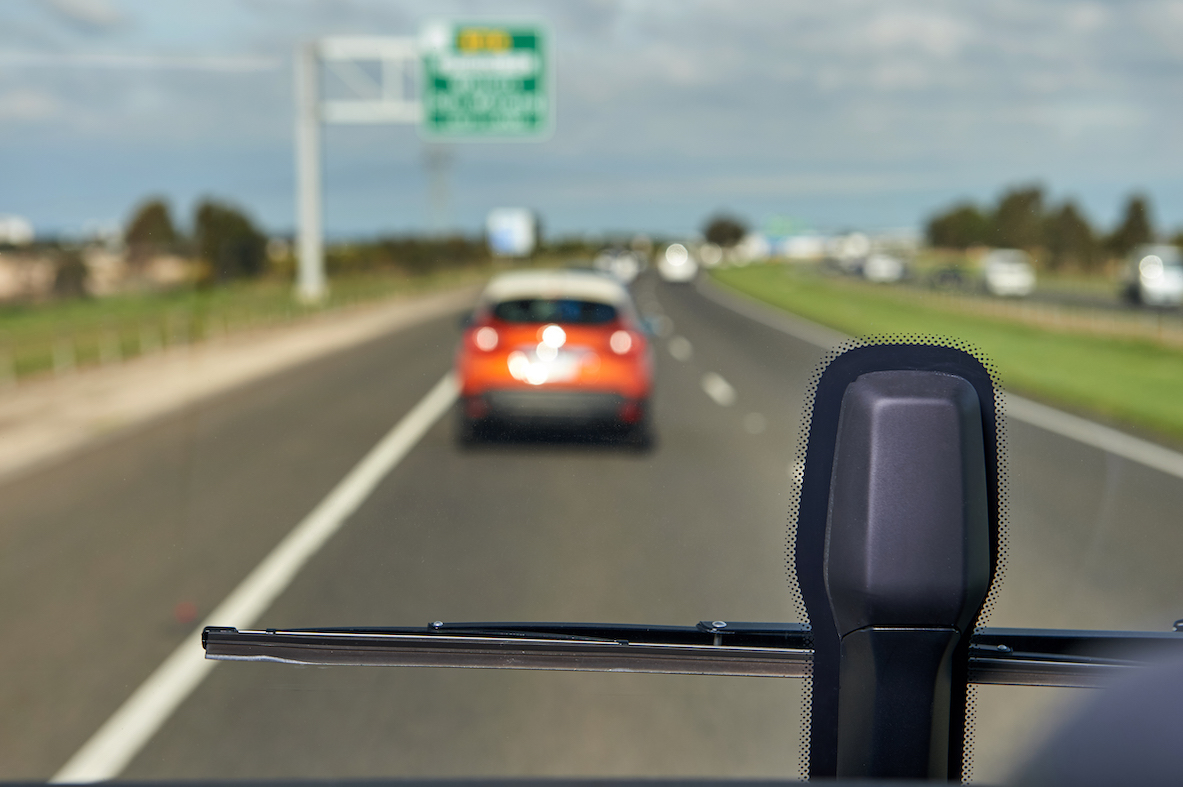
Scania’s focus on safety delivers for drivers, passengers and all road users
Scania engineers safety into all its products from the drawing board, and is a leader in active safety systems for heavy vehicles, particularly buses, as evidenced by the standard fitment of ABS and ESC for many years.
Scania buses and coaches are now available with a comprehensive array of safety systems which are designed to reduce the chance of an accident, and thus the potential for injuries for vehicle occupants as well as the general public, including vulnerable road users.
Scania’s Advanced Driver Assistance System is a toolkit that enables safe, reassuring and cost-effective bus and coach transport. It’s an electronic system of software, sensors and cameras, aimed at avoiding interactions with vulnerable road users, traffic blind spots and maintaining a safe following distance in heavy or fast-flowing traffic. The features are grouped into Comfort, Detection and Prevention.
The Comfort group comprises advanced adaptive cruise control and lane keep assist, while the Detection group includes blind spot warning and vulnerable road user collision warning, and the Prevention group adds lane departure warning and lane change collision prevention.
By 2024, European regulations will mandate a raft of ADAS features for all newly registered commercial passenger and freight vehicles, including some innovative features not seen previously, such as moving off information system, reversing detection system, driver drowsiness and alertness warning, and emergency stop signal.
“Scania fits an array of driver assistance systems to advise and alert the driver, aimed at keeping buses away from other vehicles, pedestrians and cyclists,” says Julian Gurney, Scania Australia’s Director of Sales for Bus and Power Solutions.
“With the launch of our New Bus Generation in 2022, we added a raft of advanced safety systems to our offer, aimed at protecting drivers, passengers as well as other road users, which is particularly important for operators in heavily populated and congested urban areas,” he says.
“These systems mean our new buses will be smarter, safer and will provide a greater level of protection for everyone. The benefits to operators are clear to see: These systems help prevent accidents, reduce repair costs, reduce time off road and have the potential to reduce insurance premiums. A key benefit from our perspective is also that they assist in the maintenance of good driver mental and physical health, which leads to higher levels of staff retention,” Julian says. “A further bonus is that drivers find our buses and coaches are very relaxing to drive, reducing fatigue and enhancing alertness behind the wheel.”
Another significant change for the Scania New Bus Generation is the introduction of a completely new and simple to use electro-pneumatic park brake, with multiple built-in safety features, which include removing the possibility of bus roll-away. This will be good news for all bus operators.
The Scania vulnerable road user collision warning system has particular application for bus operators. It uses a radar sensor and camera which detect and warn the driver that there may be vulnerable road users moving at low speed near the vehicle, such as cyclists or even pedestrians.
Vulnerable road user warning has three-stages. If the bus detects a vulnerable road user close to the left side of the bus, or if there is a vehicle is alongside the bus on the right, an amber light on the A-pillar passenger side illuminates; The second stage sees the amber light begin flashing and the driver’s seat starts vibrating; Should the pedestrian or cyclist get even closer, the light turns red and the driver’s seat vibration increases, particularly if the left hand indicator is activated.
“We will continue the safety innovation journey at Scania, adding safety systems as they become available from the factory,” Julian says. “Our goal is to ensure that all drivers, passengers and road users are as well protected as possible, using all the technology at our disposal.”